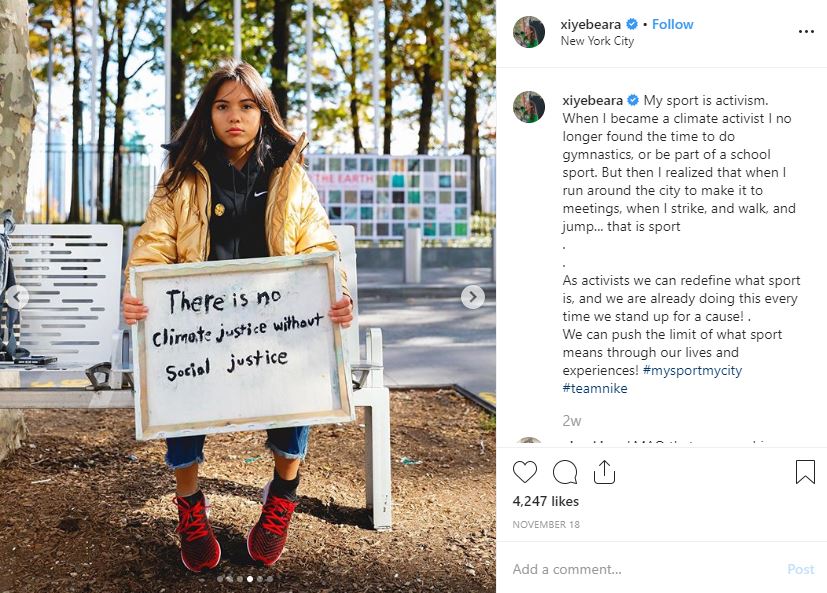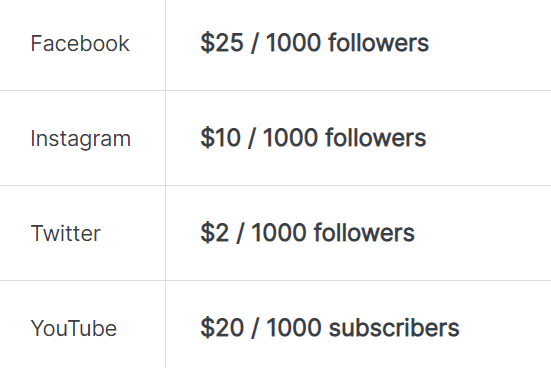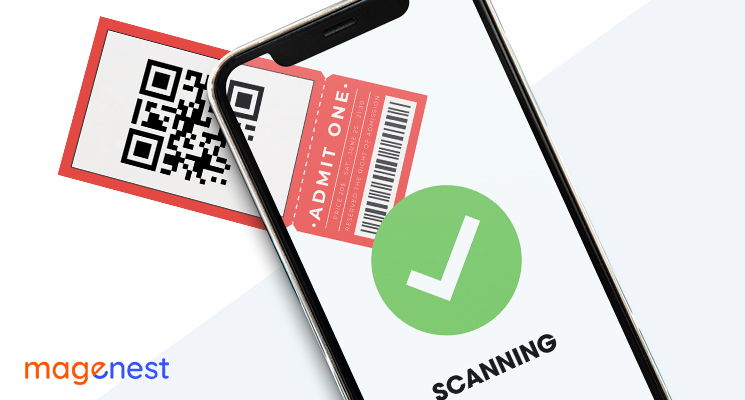Ever heard of an influencer? Of course you have, everyone has. You are probably even following some of them. In this social media era, “influencer” is blooming as an official career. And with that, comes influencer marketing.
But what is influencer marketing, exactly? How does it work? And why is it so popular? Well, for starters, influencer marketing is a sub-section which belongs to content marketing and online marketing. What is influencer marketing is a question everyone is trying to navigate, and we will do our best to help you understand the complexity of this term.
1. What is influencer marketing?
At its core, influencer marketing is just another type of social media marketing. What is influencer marketing doing, is that it takes advantage of the endorsement and affection of the public toward an influential individual, and then uses the influence of that individual to encourage and increase sentiment and royalty from the public. To put it simply, influencer marketing is a brand using a social person to broadcast their products.

That sounds a lot like celebrity endorsement. Why can’t brands just hire some celebrity to promote their products and call it a day?
Good question. Let’s dive in to find out the difference between what is celebrity endorsement and what is influencer marketing, shall we?
Celebrity endorsement
Celebrity endorsement is the process of using a celebrity’s fame and social status to promote products, brands, services, etc. The main purpose is to make the celebrity’s images become part of the brand identity in a certain amount of time; and this strategy has proven to be effective through the history of marketing.
Influencer marketing
Unlike celebrities, most influencers are not famous, many aren’t even known outside of their close circle of followers. Influencers are often well-connected individuals who have active minds, are able to create an impact within their community, and are often trendsetters. And just because an individual has many followers does not necessarily mean they have much influence over those individuals - and an influential individual does not necessarily have many followers.
There are a lot of criteria to decide whether a person is an influencer or not, but in order to determine what is influencer marketing, this article will define an influencer as a person who has a number of following in a small niche who they are deeply connected with, and the power to affect the buying decision of that following.
A celebrity’s influence, even though spread wider, is also thinner. Meanwhile, an influencer, despite not being well-known, their connection with their followers runs deeper. Therefore, what is influencer marketing after is neither fame nor images, but rather a closer and more human connection with some community through their influential individual. Influencer marketing is a collaboration between a brand and an influencer, where the influencer will spread brand awareness and promote the brand's products/values.
2. What is influencer marketing’s role in the marketing landscape?
We are always influenced by what we see and what we interact with every day, and that is the basis of what is influencer marketing. Because the influencers are closely related with their followers, they would be the first ones to catch on with whatever their community is currently into - or even shape what their community is into. Therefore, nowadays, influencers are often also trendsetters, and the ones herding the public.

Thus, it is important for brands to realize that influencers are the ones with the power of affecting people’s decisions. They are the ones that have successfully built trust and connection within their community, so it’s important to remember that the loyalty of the customers lies in their influencers, not the brand. That’s why you should let the influencers decide how they want to promote your brand, and you shouldn’t force them into the rules and practices of your business. Granted, they may need money, but if you force them away from their personal branding, they can simply refuse the offer, and thus there go your potential customers.
Traditional social marketing encourages brands to build their identities on whatever platform they prefer, and try to engage with customers as much as they can - throwing out content to see what hits, trying to grab random likes and followers, trying to build connections with every single person on the internet. And it works! But it’s also a little bit scattered all over the place, and the results are not always beneficial.
However, what is influencer marketing telling us is that instead of focusing on the community as a whole, we should focus on the influential individuals of those communities. If you can create hand-pick contents that fit the interests and values of a handful of influencers. Sure, the final goal is still the general public, but by making the influencers your middlemen, your job is going to be easier and more focused.
3. How to create an influencer marketing strategy
So now you have learned what is influencer marketing and why it is important. It’s time for us to move on and start diving into actually building an influencer marketing strategy. What to do now?
Identify your target market
As new and revolutionary as it is, influencer marketing is still part of marketing. And no marketing strategy can ever succeed if you cannot target the right audience. So before diving into the tangled web of what is influencer marketing, you should conduct some research to know who is the target customer of your product.
Draw up the profile for your target customer. How old should they be? What would be their field of occupation? Are they wealthy? Upper-class or middle-class? What do they often like doing? Are they from all over the world, or are you just targeting some particular places? Gender, races, sexual identities - do those traits have any factor in the profile of your customer?

All marketers know that the smaller your target market is, the higher the chance you get loyal customers. But do you want a small target market with few regular customers, or do you want a more spread-out market that can bring in more new customers? These are the questions you need to answer before moving on to the next step of influencer marketing. (In fact, these are the questions all marketers need to figure out before moving forward with any kind of marketing campaign).
Finding the perfect influencer
So, you're done finding out your target market? Excellent. By now, you should be able to find some small communities that check all the boxes for your target market. This is where you will find an influencer that can align themself with your cause. However, before you decide on who is going to be your new muse, maybe consider the type of influencer that you want.
I know what you are thinking. “Type? This is not Tinder!” Well yes, but you see, there are many types of influencers. So I will just give you a quick list, so you know how to navigate the utopia of what is influencer marketing.

Types of influencers by personal branding
Regardless of their niche or interests, influencers can be divided by the values and brandings that they set for themselves. Some influencers see themselves as trendsetters, the first to adopt and/or abandon a trend. Some influencers are activists - voicing out and fighting for their believed causes. Others consider themselves as “free-spirited” who focus on a lot of different interests and fields all at once. There are even authoritative influencers, who in real life actually have some kind of authority and use that to build trust within their communities.
And these are not exclusive - an influencer can (and often) be associated with more than just one trait. Deciding which type of personalities will suit the tone of your campaign and choosing the influencers accordingly can bring wonder to your influencer marketing strategy.
Type of influencers by number of followers
And of course, what is influencer marketing about, if not the number of followers? Influencers are very often categorized by their followers on all of the social media platforms, but mostly Facebook, Instagram, Twitter, and YouTube. An influencer can be a minor celebrity with their own fan base up to hundreds of millions, to someone who focused on a very close group with only roughly a thousand followers. And of course, influencers are ranked in tiers based on the size of their followings - from mega-influencers to macro-, micro-, and even nano-influencers. When you decide to choose your influencer based on their followings, just remember: the wider the connections spread, the thinner it gets.
Also, when choosing an influencer to introduce and review your product, you should consider some questions, such as whether that influencer has already posted things related to your brand’s fields? Have they worked with brands similar to yours before? Do they vibe with you? (Yes, I do notice the last question sounds a lot like swiping on Tinder, but hey, when it comes to finding partners, there has to be similarity somewhere).
Budget and Timing
And now, we have come to the two most important things in life: money and time. Now, as with every marketing campaign, before you start an influencer marketing campaign, you have to have a solid budget, along with a time frame and a clear goal.
First thing first, have you got your eyes on the perfect influencer yet? Good. Now it’s time to consider how much you may pay for them. A minor celebrity with more than 200k followers is going to cost a lot more than one with around 5k - 10k followers. Or maybe a micro-influencer with only about 2k would fit better with your goal? Before you offer them a price, maybe take a look at the common rate and see what is influencer marketing costing you these days based on the number of followers.
- A Facebook influencer can charge about 25$/post/1k followers. This means that for someone with 1k followers, a post can cost you 25$. If you hire someone with 100k followers, the average is 2,500$ per post. You do the math.
- Instagram influencers overall charge less per post - around 10$/post/1k followers. An influencer with 100k followers would charge around $1,000 per post. Fact: Cristiano Ronaldo charges 750,000$ per post, which for me is just insane. Or maybe I’m just poor.
- Twitter has the smallest rate, around 2$/post/1k followers. It’s because Twitter has a character limit, so generally, it’s not an exciting market, but you can still get something out of it if you know how to.
- YouTube is exciting - they often charge 20$/video/1k subscribers, but YouTubers with more than one million subscribers often like to go way beyond this rate - which is fair, because a video takes much longer to make than a post. A popular YouTuber with more than a million subscribers can charge you up to 50,000$ per video.
Of course, there are so many other platforms than just these four, but you get the idea. Research the market. Look into the rates. Calculate the ROI numbers. And that’s how you decide on the budget. To make things easier for you, here are the basic rates summed up in a table:

Alright, we have the budget - now on to the timing. Nothing could go on forever - not our lives and certainly not your influencer marketing campaign. Unlike your life, you do actually have a say on how long your campaign should be running. And like your life, you should check up on your campaign frequently - you know, to make sure that it’s healthy and going well.
Even if everything is going smoothly, you should still have pre-determined dates to check up on your progress. Is your campaign getting enough interaction? Is your image being promoted as it should be? If you want to keep track of sales or link clicks, you should provide your influencers with unique links and discount codes - that way you can trace where the interactions and sales are coming from. You should even come up with a unique hashtag, like #MagenestForLife!
Point is - you should have a schedule and what goal you want to achieve at what time. And when that time comes, check up on your campaign, do a review, analyze the data, and decide to make appropriate changes if needed. Things will not always be on track, but hey! Like a wise man used to say, “Improvise, Adapt, Overcome”.
4. BONUS: Influencer marketing dos and don’ts
Okay, now we have covered the basic ground of what is influencer marketing. Before I call it a day, here are the basic list of dos and don’ts that I think might come in handy:
DO:
- Be organized - have a clear plan, a strict budget, a regular schedule, and a solid goal.
- Do your homework - research the market, the influencers, the trend, the people.
- Be human - influencer marketing is all about human to human connection, not company to customers.
DON’T:
- Treat influencers like they are your inferiors - or even your employees. They are your partner, and they have more power and independence than you think.
- Be controlling. Reviews should be honest. If you have an influencer review you saying only good things even though it’s not how they feel, you just doomed yourself.
- Generalizing. This is not a one-size-fits-all T-shirt. They are all human, they are unique, the community is unique. Be mindful and tailor each campaign to fit different influencers.
Conclusion
So there you have it - what is influencer marketing in a nutshell. It’s not an easy subject to tackle, sure, but nothing ever is easy - especially in marketing where everything and everyone keeps changing and growing every day. But the rise of social media and influencers means that we now have another way to approach the customer - a very casual and human way at that. If you want to try influencer marketing or just social marketing in general, maybe check out our Social Media Login and Share extension - it can help people access your website easier from social media, and also help if you want influencers to share your link.

















